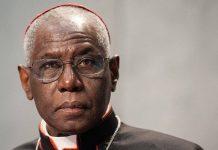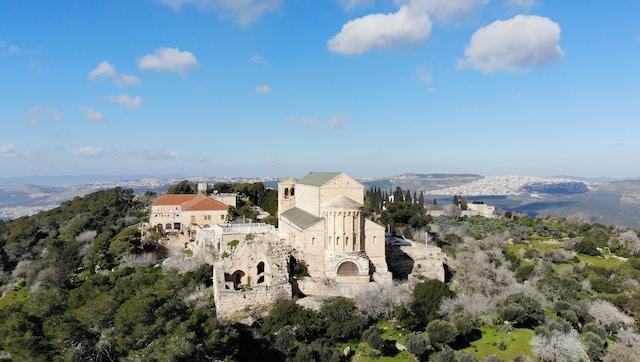Anyone who thinks that the Transfiguration of Our Lord was just a milestone in the lives of the Apostles is mistaken. So what is the significance of this great event for us?
Newsroom (06/08/2023 12:33, Gaudium Press) The Gospels narrate not only the countless occasions on which Our Lord’s human nature clearly shines through, but also the abundant events that manifest Jesus’ divinity: from the supernatural events surrounding his birth, his glorification by the Father and the Holy Spirit at the moment of his Baptism, the countless miracles, such as the healing of the blind, lepers and the lame; resurrections, dominion over nature and so many other signs he performed. However, without a doubt, already foreshadowing the glory of his Resurrection, the clearest manifestation of his divinity took place at the Transfiguration, commemorated in a recent liturgy.
A preparation for Calvary
At that time, Jesus took with him Peter, James and John his brother, and led them away to a place on a high mountain. And he was transfigured before them; his face shone like the sun and his clothes became white as light. Then Moses and Elijah appeared, talking with Jesus (Mt 17:1-3).
There, on top of Tabor, Moses and Elijah represented the Old Testament: Moses, the law; Elijah, prophecy. They were the two great figures of the chosen people who stood there before the Son of God.
Who could imagine all the brilliance that the three Apostles contemplated at that moment? It really is something indescribable!
But what was Our Lord’s intention in manifesting his glory to these three disciples?
“Coincidentally”, they were the same ones – Peter, James and John – that Our Lord called to himself so that they could watch with him during his agony in the Garden of Olives (cf. Mk 14:33; Mt 26:37). Was it really just a coincidence?
An old adage rightly says that “words move, but examples drag”. In fact, “purely doctrinal teaching alone cannot move a man to transform his life.”[1] In view of the harsh trials that his disciples would have to undergo, Our Lord could have announced to them in words alone the glory that was in store for him and, in some way, also for all those who were faithful to him. However, his love for them was so great, and the difficulties they would have to face so great, that he chose not only to announce his glory to them, but also to manifest it to them.
Moreover, as St. Thomas Aquinas says, “in order to walk a path well, it is necessary to have a prior knowledge of the end. […] And this is especially necessary when the path is difficult and rough, the journey laborious, but the end beautiful.“[2]
Thus, the Transfiguration was for the Apostles a preparation made by Jesus for the sufferings that awaited them, so that they “would not only feel strengthened to face the traumas of his Passion, but would also more easily help their brethren to solidify the Holy Church, and strengthen the faithful throughout the ages.”[3] In this sense, the Transfiguration was a preparation made by Jesus for the sufferings that awaited them. [3] In this sense, Pope Leo the Great comments: “It was necessary for the Apostles to conceive in their souls this strong and blessed firmness, and not to tremble before the harshness of the cross which they had to carry.”[4] This event was therefore of the utmost importance for the perseverance and fidelity not only of these, but also of the other Apostles, and even of the Holy Church itself.
So the reader would be very mistaken to think that the Transfiguration of Our Lord was a milestone only in that historical context, and that, in our day, this fact, beautiful in its narration, would not have repercussions in our lives.
However, without a doubt, this event brings us a beautiful teaching, which we should treasure.
God’s “Tabors” in our souls
According to theologians, God pours out mystical graces on everyone who walks the path of salvation, and no one is excluded from receiving them.[5] They are like precious treasures, like “Tabor mountains” where Our Lord is transfigured before us. Who hasn’t felt a great inner joy, a supernatural consolation when attending Mass, listening to a beautiful sermon or contemplating a pious image?
These are all visits from God to our soul, and they must be kept not only in our memory, but above all in our heart, where they must be engraved with iron and fire, so that they never fade away. And they are often given to us in view of some trial that we will soon have to go through. On these occasions, God’s care for each of us is particularly evident: even before we ask him for help, he is already supporting us.
Our attitude towards these graces should be similar to that of St. Peter at the Transfiguration: “Lord, it is good for us to stay here. If you wish, I will make three tents here: one for you, one for Moses and one for Elijah” (Mt 17:4). In other words, if we could, we would never allow them to leave our soul.
However, for our salvation, God allows not only the pleasant moments of “Tabor”, but also the arduous moments of “Calvary”.
Let us therefore know how to make all the graces we have received from God bear fruit and correspond to them, because at the moment of trial, they will be our support, our strength and our victory.
By Lucas Rezende
[1] CLÁ DIAS, João Scognamiglio. The unpublished Gospels. LEV: Città del Vaticano, v.7, 2013, p. 136.
[2] SAINT THOMAS AQUINAS. Summa Theologica. III, q. 45, a.1.
[3] CLÁ DIAS, João Scognamiglio. Op. cit., p. 137.
[4] ST. LEO THE GREAT. Hom. Sabb. Ante II Dom. Quadr. On the Transfiguration, Hom. 38 [LI], n. 2. In: Sermons. Paris: Du Cerf, 1961, v. 3, p. 16-17.
[5] Cf. GARRIGOU-LAGRANGE, Réginald. Les trois âges de la vie intérieure. Paris: Du Cerf, 1995, v. 1, p. 27.
The post Between Tabor and Calvary, what to do? appeared first on Gaudium Press.



































